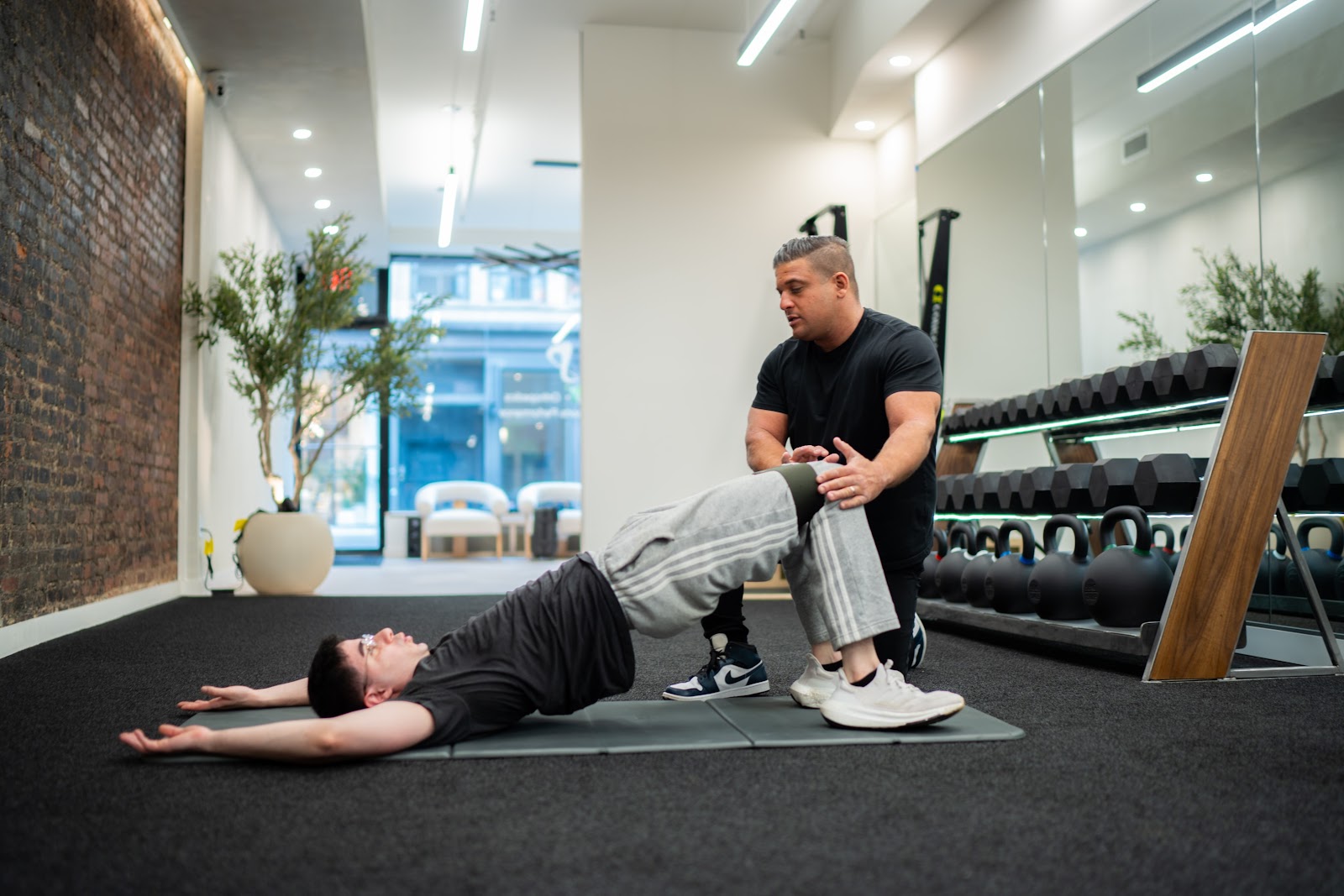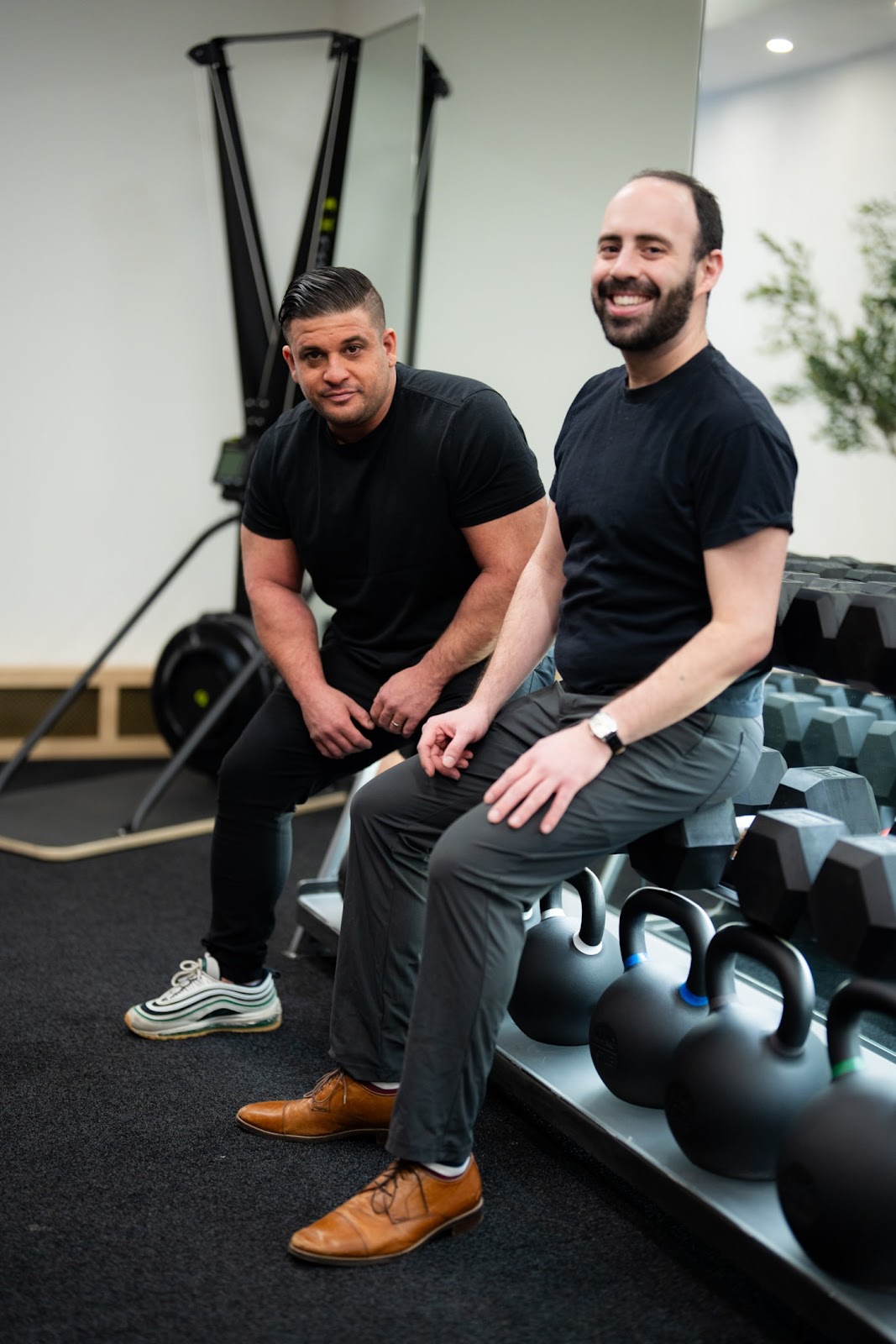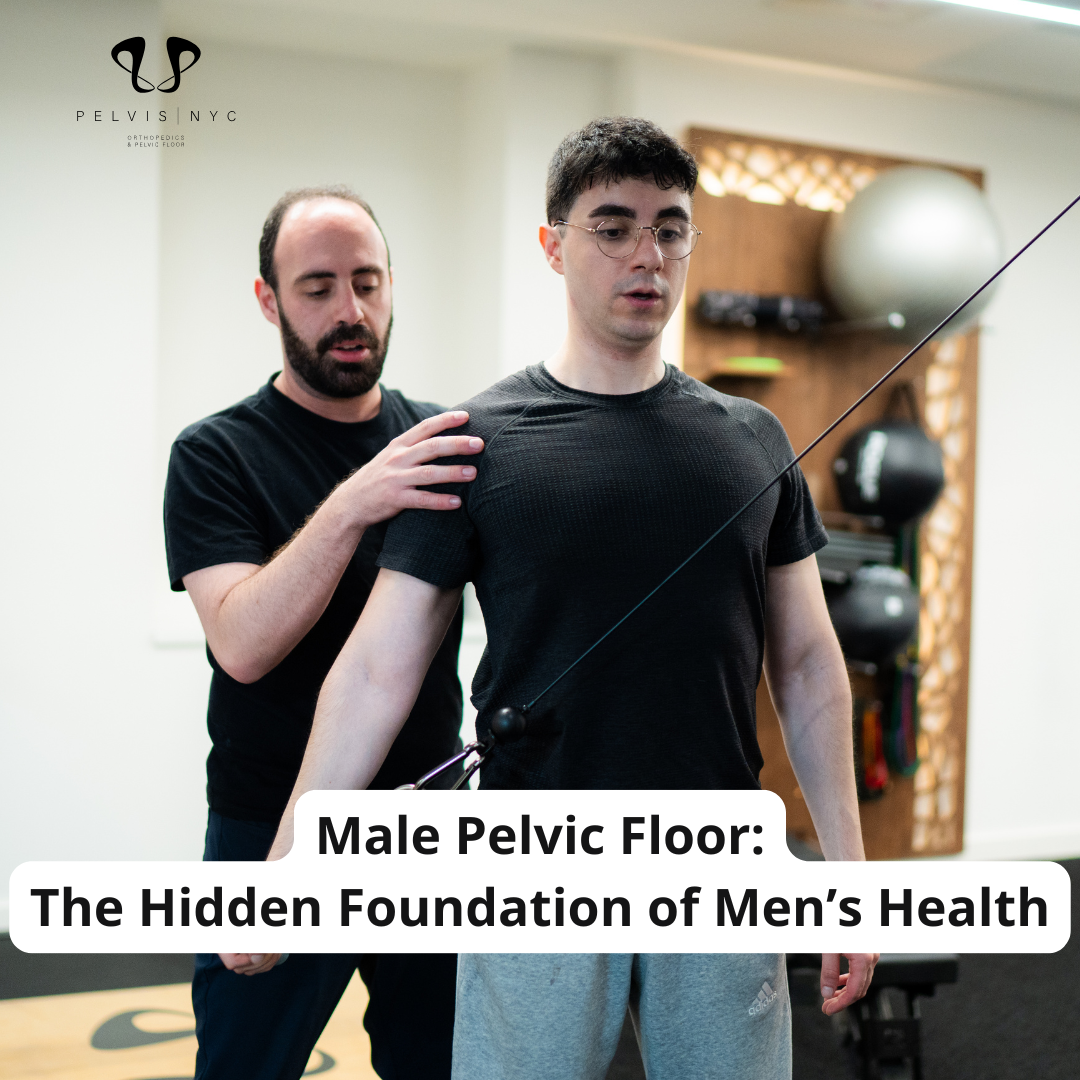When we think of men’s health, we often focus on biceps, six-packs, or heart health. Yet hidden deep within your core lies a powerful network that influences bladder control, erectile function, and posture—the male pelvic floor. While this area is often overlooked or labeled “women’s health,” men absolutely have pelvic floor muscles, and training them can transform performance, recovery, and daily comfort.
From boosting your lifts to extending your staying power in the bedroom, from post-prostate recovery to aging gracefully, your pelvic floor plays a critical role. In this guide, we’ll find out what it is, why it matters, how to work it intentionally, and how to avoid common pitfalls. Understanding and training these muscles can unlock new levels of confidence, vitality, and well-being.
What’s the Pelvic Floor—and Why It Powers Men’s Health
The pelvic floor is a group of muscles and connective tissues that form a sling at the base of the pelvis. The pelvic floor muscles form a supportive sling that helps maintain continence and sexual function.
In men, these muscles support the bladder, rectum, and prostate, and play a key role in sexual and urinary functions. Anatomically, the pelvic floor muscles stretch from the pubic bone at the front to the tail bone (coccyx) at the back, and from one ischial tuberosity to the other, providing a strong base. The urethra passes through the pelvic floor muscles, and their strength is important for urinary control. In addition to muscles, other tissue such as connective tissue also supports the bladder and bowel.
Main male pelvic floor muscles include:
- Pubococcygeus (PC) – Supports the bladder and contributes to ejaculation control.
- Bulbocavernosus – Affects erections and ejaculation.
- Ischiocavernosus – Helps maintain penile rigidity.
- External urethral sphincter – Controls the flow of urine.
- Levator ani group – Lifts and stabilizes the pelvic organs.
Together, these muscles work to manage pressure in the abdomen, support internal organs, and help control bodily functions. They also coordinate with the deep core, diaphragm, and glutes.
Do Men Have Pelvic Floor Muscles?
Yes—men absolutely have pelvic floor muscles, even though they’re less frequently discussed in public health. In fact, these muscles are vital for:
- Urinary continence
- Fecal continence
- Sexual function and orgasmic intensity
- Postural support
- Lower back health
Pelvic floor muscles support the bladder, bowel, and sexual function, helping maintain continence and core stability.
Ignoring pelvic floor health can lead to long-term issues that range from incontinence to erectile dysfunction and chronic pelvic pain.
Male Pelvic Floor Dysfunction: Signs & Symptoms
Pelvic floor dysfunction in men is often underdiagnosed. A weak pelvic floor or weak pelvic floor muscles can result from injury, aging, or lifestyle factors, and may lead to issues with continence and pelvic support. It can stem from weakness, tension, nerve damage, or poor coordination of the pelvic muscles.
A tense pelvic floor, also known as a hypertonic pelvic floor, occurs when the muscles are overly tight, leading to symptoms such as pain, constipation, and urinary issues.
Common Symptoms:
- Leaking urine, especially after urination (post-micturition dribble)
- Urgency or frequent urination
- Inability to fully empty the bladder
- Erectile dysfunction (ED)
- Premature ejaculation
- Pain in the penis, perineum, rectum, or tailbone
- Constipation, straining to defecate, or difficulty moving the bowels
These issues can affect young and older men alike—often without them realizing the pelvic floor is to blame.
How the Male Pelvic Floor Muscles Work
The male pelvic floor muscles work as a supportive foundation for your pelvic organs, including the bladder, bowel, and rectum. These muscles form a hammock-like structure at the base of your pelvis, contracting and relaxing to help you control the flow of urine and feces, and to support sexual function. When you need to hold in urine or prevent passing gas, your pelvic floor muscles contract; when it’s time to urinate or have a bowel movement, they relax. This coordination is also crucial for sexual performance, as strong pelvic floor muscles can enhance erections and ejaculation.
If your pelvic floor muscles become weak or are not functioning properly, you may experience issues like urinary incontinence, fecal incontinence, or erectile dysfunction. Weakened pelvic floor muscles can make it harder to control your bladder and bowel, leading to leaks or accidents. The good news is that regular pelvic floor exercises, such as Kegel exercises, can help strengthen these muscles, improve bladder and bowel control, and support better sexual health. By making pelvic floor training a part of your routine, you can help ensure these essential muscles work efficiently throughout your life.
Finding and Contracting Your Pelvic Floor Muscles
Finding your pelvic floor muscles is the first step to effective pelvic floor training. To locate the correct muscles, try to stop the flow of urine midstream or imagine you’re trying to prevent yourself from passing gas. The muscles you engage in these moments are your pelvic floor muscles. To contract them, squeeze your pelvic floor as if you’re stopping urine or holding in gas, hold the squeeze for a few seconds, then relax. Repeat this process several times, focusing on using only the pelvic floor muscles and not your thighs, buttocks, or abdomen.
It’s important to use the correct muscles when performing Kegel exercises. Using the wrong muscles can make the exercises less effective or even cause discomfort. If you’re unsure whether you’re targeting the right muscles or if you have trouble isolating them, don’t hesitate to seek guidance from a physical therapist or healthcare provider. They can help you learn how to squeeze your pelvic floor properly and ensure you’re getting the most benefit from your exercises.
How the Male Pelvic Floor Muscles Work
The pelvic floor is dynamic. When you contract the pelvic floor muscles, they create a lift, which can be seen as an upward movement of the penis and testicles. It tightens to help you hold in urine or gas, and it relaxes to let you urinate or pass a bowel movement. During sexual activity, these muscles are also responsible for generating and controlling erections and ejaculations.
Proper function requires both strength and relaxation. If the muscles are too weak, you might experience leaks or erectile problems. If they’re too tense, it can lead to pain and urinary retention. Like any other muscle group, training and balance are key.
Kegel Workout for Men: The Core of the Pelvic Region
Kegel exercises, first introduced by Dr. Arnold Kegel in the 1940s, were designed to strengthen the pelvic floor. While popularized for women, Kegels are equally beneficial for men.
Performing a kegel exercise regularly, such as during daily routines, can help prevent urinary leakage.
🛠️ How to Do Kegels/ Pelvic Floor Exercises Correctly:
- Identify the musclesTry to stop the flow of urine mid-stream. The muscles you engage are your pelvic floor.
- Contract and holdSqueeze the muscles for 5–10 seconds, then relax for the same duration. Squeezing the pelvic floor muscles is the key movement in Kegel exercises and helps ensure proper muscle engagement.
- RepetitionDo 3 sets of 10 reps daily. Perform them lying down at first, then progress to sitting and standing.
- Breathe normallyAvoid holding your breath or tightening your buttocks or thighs.
❗️Note: Stopping urine mid-flow should only be used to identify muscles, not as a regular practice—it can interfere with bladder function.
Proven Benefits of Pelvic Floor Training in Men
✅ Urinary Control
- Especially beneficial after prostate surgery (e.g., radical prostatectomy).
- Can reduce urinary leakage and urgency.
✅ Erectile Function
- Strengthens the bulbocavernosus muscle, which improves blood retention in the penis.
- A 2005 clinical trial found that pelvic floor muscle training significantly improved ED in 40% of men within 3 months.
✅ Ejaculatory Control
- Enhances awareness and control during sex.
- Reduces premature ejaculation through muscle timing.
✅ Chronic Pelvic Pain Relief
- Helps relax tense or overactive pelvic muscles.
- Effective when combined with pelvic floor physical therapy and biofeedback.
Don’t Overdo It: The Problem of Overactive Pelvic Floors
Just like any muscle, the pelvic floor can be too tight. Men who constantly “hold in” tension may experience:
- Painful urination or ejaculation
- Testicular or perineal discomfort
- Constipation
- Urinary hesitancy
Tension in the pelvic floor muscles can also affect the back passage (rectum), leading to problems with continence and bowel movements.
If that sounds like you, relaxation techniques are more important than strengthening:
- Diaphragmatic (deep belly) breathing
- Gentle yoga or stretching
- Manual therapy by a pelvic floor physical therapist
Other Exercises That Support the Pelvic Floor
In addition to Kegels, incorporating other functional movements can help strengthen the muscles that work closely with the pelvic floor. Exercises like glute bridges are particularly effective because they engage the glutes and lower back while encouraging pelvic stability. Squats are another excellent choice—they activate the core, hips, and thighs, which all contribute to better pelvic support. Strengthening the transverse abdominis, the deepest abdominal muscle, is also key; this can be done through controlled core exercises that emphasize deep breathing and core engagement. Movements like dead bugs and other core stabilizing drills help coordinate the pelvic floor with surrounding muscles, improving overall control and function.
Preventing Pelvic Floor Injuries and Health Issues
Taking steps to prevent pelvic floor injuries and health issues can make a big difference in your long-term well-being. One of the most effective strategies is to perform Kegel exercises regularly, which helps strengthen your pelvic floor muscles and supports better bladder and bowel control. In addition to exercising, maintaining a healthy weight reduces unnecessary pressure on your pelvic floor. Avoiding repeated heavy lifting and managing chronic coughs, such as a smoker’s cough, can also help protect these muscles from strain and injury.
If you experience symptoms like urinary incontinence, fecal incontinence, or pelvic pain, it’s important to seek advice from a healthcare professional. Early intervention can prevent minor issues from becoming more serious. Remember, your pelvic floor muscles play a vital role in controlling your bladder and bowel, so taking care of them through regular exercise and healthy lifestyle choices is key to preventing pain and incontinence.
Treatment Options for Pelvic Floor Dysfunction

If you’re dealing with pelvic floor dysfunction, there are several treatment options available depending on the cause and severity of your symptoms. For mild cases, performing Kegel exercises as part of a regular exercise routine can help strengthen your pelvic floor muscles and improve bladder and bowel control. If you need additional support, physical therapy with a specialist can provide targeted exercises, biofeedback, or even electrical stimulation to help retrain your muscles.
In some situations, medication or surgery may be necessary to address underlying issues like severe urinary incontinence or fecal incontinence. Your healthcare provider can help you determine the best treatment plan for your needs, whether that involves adjusting your exercise routine, making lifestyle changes, or exploring medical interventions. Don’t hesitate to reach out to a healthcare provider if you’re experiencing symptoms—early treatment can make a significant difference in your recovery and quality of life.
ℹ️ Myth Buster | Quick Q&A
Myth: “Kegels are only for women.”
Truth: Men’s pelvic floors benefit equally—improving leaks, erections, and sexual stamina.
Myth: “Stronger is always better.”
Truth: When pelvic floor muscles are too tight, they restrict function—balance, not just strength, is key.
Final Thoughts: It’s Time to Talk About It

The male pelvic floor is a vital yet often ignored part of men’s health. These muscles affect your ability to control urine, enjoy sex, support your core, and recover from surgery or injury. Understanding their function—and learning how to train them—can dramatically improve your quality of life.
Whether you’re managing a specific issue or just want to optimize your long-term health, pelvic floor care is an investment worth making. Start with small steps. Stay consistent. And don’t be afraid to seek support—your body will thank you.
✅ Ready to take your pelvic health seriously?
👉 Connect with the experts at Pelvis NYC—a leading pelvic floor physical therapy clinic specializing in men’s pelvic health, sexual dysfunction, post-surgical rehab, and core optimization. Their evidence-based, personalized programs are designed to help you regain control, eliminate discomfort, and elevate your quality of life.
Your pelvic floor matters. Make it a priority—start with Pelvis NYC today.


